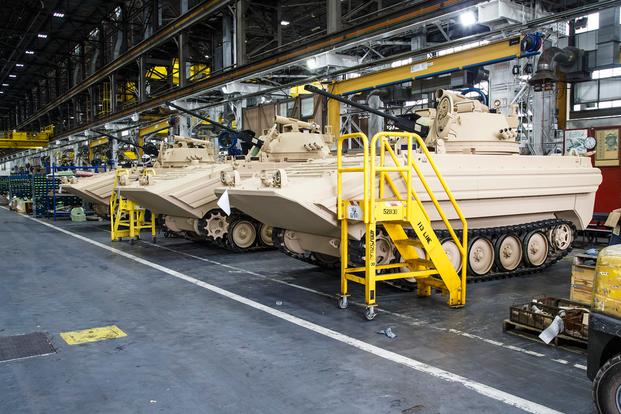The Army plans to have a blueprint for its successor to the M1A2 Abrams Main Battle Tank and Bradley Fighting Vehicle by 2022.
But for now, leaders have only a wish list.
The Next Generation Combat Vehicle (NGCV) needs to be smarter and leaner than its predecessors -- and completely reimagined, said Maj. Gen. Eric Wesley, who commands the Army's Maneuver Center of Excellence and Fort Benning, Georgia.
"We don't just want to built a better mousetrap. We could very easily fall back into building what we already know," Wesley said during an address at the Association of the United States Army annual meeting Monday.
Related content:
- Some Abrams Tanks Will Have 'Trophy' System by 2020: Army
- Army Weapons Tests on the Fly in Effort to Win Race Against Russia
- Army Chief: Train and Advise Troops 'Are Not Special Forces'
The NGCV has been thus named so as not to "lead the jury" as to what the next Army war vehicle will be, or whether it's closer to a tank, a Bradley or something else entirely, he said.
Moreover, he added, the Army expects that the new vehicle won't inherit any major components from previous vehicles, since the service doesn't want to invest heavily on innovation just to end up with something it already has.
While the shape of the vehicle remains undecided, Wesley said it's clear it needs new ways of defending itself, including active protection systems and new weapons -- all with the goal of lightening the load and increasing maneuverability.
The Army's current tanks weigh nearly 80 tons, Wesley said, up from roughly 65 when fielding began.
"We cannot afford to take another plate of steel and put it on the front," he said. "We cannot afford to increase the weight of the Abrams, because it's no longer mobile. You can't get it across key roads and bridges; you can't truck with it. Just adding passive armor is no longer sufficient."
Active protection systems, which the Army is working to add in modular form to its existing vehicles, would allow the NGCV to operate lighter by creating a force field of sorts to defend against incoming fire before it makes contact.
"Active protection ... allows you to lower the weight and increase the protection of the vehicle by destroying rounds before they can penetrate the vehicle," Wesley said.
Another weight-saving measure that may appear on the NGCV? Laser weapons.
Directed energy, now being used in such military applications as the Navy's prototype railgun, could replace traditional mounted weapons on the new vehicle.
"We know that lasers are up and coming; we also know they have limitations. But we have to have an ability to incorporate that tool and that weapon system against threats," Wesley said.
"If you get sufficient energy ... you don't even have to worry about the supply chain of ammunition," he said. "Now you've got increased capability with reduced weight."
The Army is set to make its materiel development decision on the way forward for the NGCV by 2022, and to start fielding the futuristic new vehicle no later than the mid-2030s.
The Bradley and the Abrams will continue to fight for the service into the late 2040s, Wesley said.









